Adding movie controller buttons
In the previous tips we’ve learnt how to add a simple rollover effect and insert a movie in InDesign.
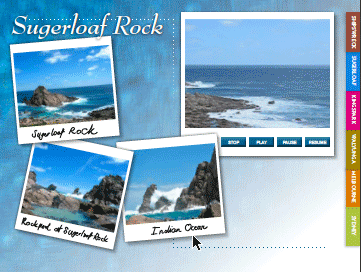
In this tip, will add our own controller buttons to the movie with which we can stop, play, pause and resume the movie.
Adding the buttons
The four buttons I have added below the placed movie, are simple text frames that have an Embossing effect applied to them.
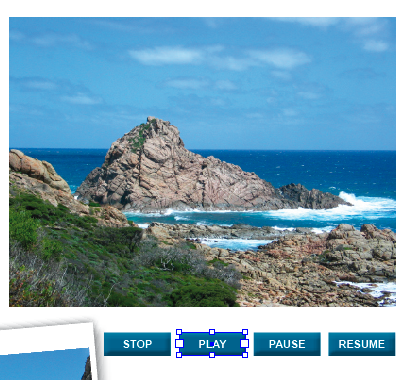
The Embossing settings I have used are as follows:
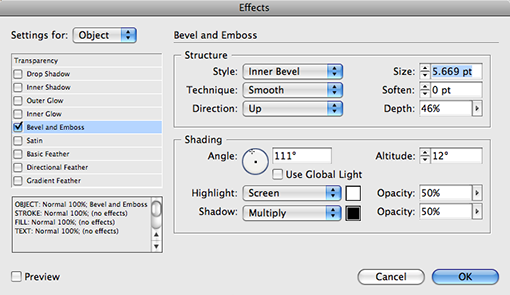
I’ve used a small inner bevel, that makes the text frames look like buttons.
With the Effect applied, we are now ready to convert the text frames into a button and add some rollover effects (see also Creating Interactive PDFs from InDesign (1)).
In the Button panel click the Normal State Appearance. Doing so converts the text frame to a button.
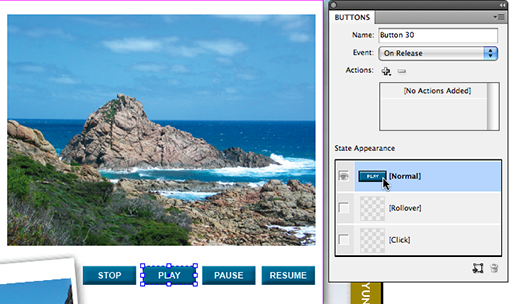
Next click the Rollover State Appearance in the Button panel and change the Fill colour for the text frame. I’ve used green.
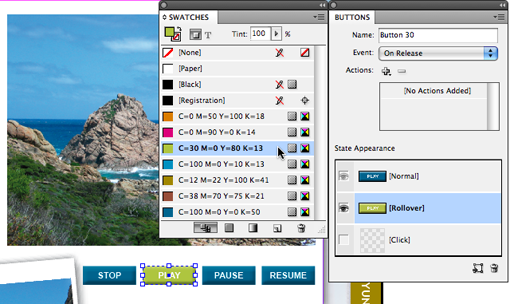
Next click the Click State Appearance in the Button panel and change the Fill colour for the text frame. I’ve used orange.
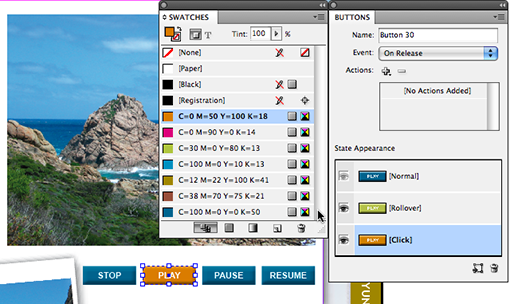
Setting Event and Action
We’re now ready to set Events and Actions. An Event is something that triggers an Action. In other words. If I switch on my kettle in the morning (Event), the water in it will boil (Action) … What we want to do is ensure that when the button is clicked the movie starts playing.
The question is though… what event would you choose? There are several events available: On Release, Click, Roll Over, Roll Off, and On Focus and Blur.
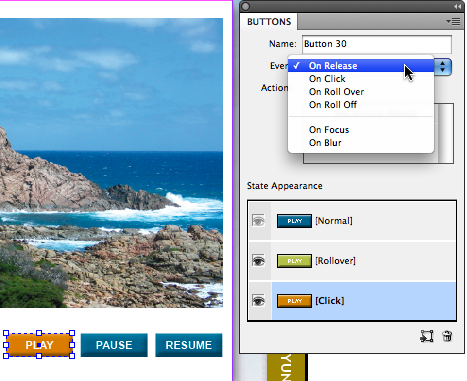
At which time when clicking a button would you want the Action (Play movie) to occur? I’m choosing on Release, as that will give the viewer the chance to change their mind when they click the mouse button, they can still move the cursor away from the button and it won’t start playing when they release the button again. Instead the Action will not be triggered until the Mouse button is released right on top of the button.
With the Event set, we can now determine what Action needs to follow the Event.
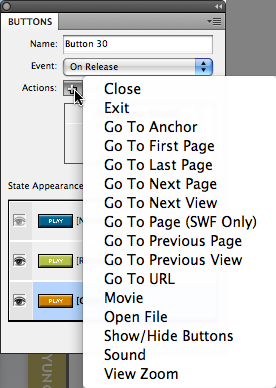
There are quite a few actions to choose from. There isn’t a “Play Movie” action. However there is a Movie action, and we’ll choose that. When you select the Movie Action there are two more settings to set.
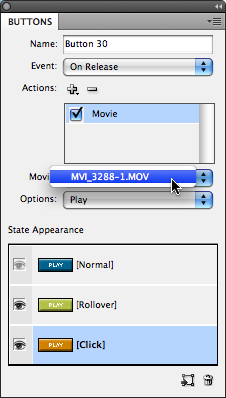
First of all InDesign must know which movie you might want to use in the Action. You could have multiple movies placed throughout the InDesign document. Choose the correct moview from the “Movie” pop-up.
Next we need to set the Option.
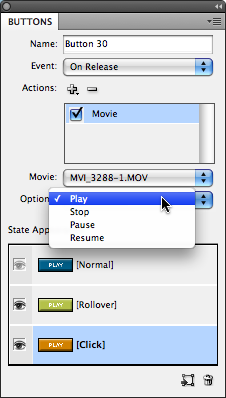
There are four (4) options available: Play, Stop, Pause, Resume.
Play will start playing the movie in the PDF
Stop will stop playing the movie and will return to the original Normal state (the start of the movie and the movie poster we selected).
Pause, will interrupt play of the movie and leave the “play-head” at the last point in the movie you’ve seen.
Resume, will continue playing the movie from the position of the “play-head’.
As we’re working on the Play button, we’ll choose Play.
Repeat all of the previous steps for the other three buttons you’ve created and choose the relevant Stop, Resume and Pause options at the end of the movie settings.
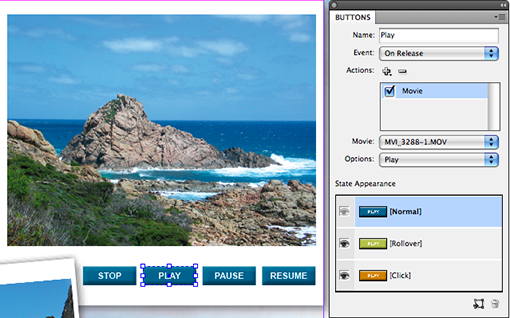
Last but not least don’t forget to Name your Button. I’ve named my button “Play”.
Once the remainder of the buttons are ready, we can export our InDesign file to PDF and test that all buttons work as intended.
Tip: To preview/play a movie from InDesign, Double click the movie with the selection tool. Quicktime movie player will launch and you can preview the movie in Quicktime.
Creating the PDF
Choose a File > Adobe PDF Presets and select a PDF setting from the list of settings. Alternatively choose File > Export and set Format to PDF.
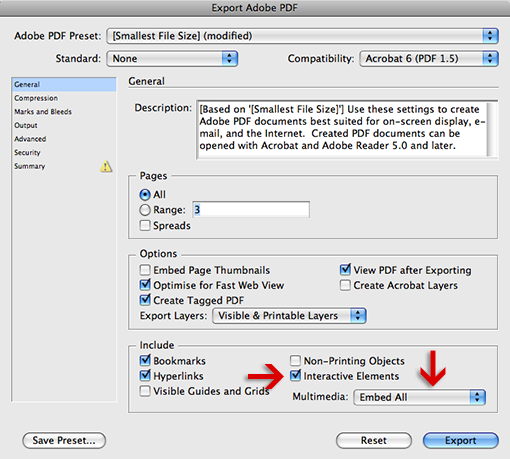
In the General section of the Export Adobe PDF dialog ensure the Interactive Element option is enabled for inclusion, this ensures the buttons are all working. You must also include the movie itself. I’m choosing Embed All. As I selected “Embed Movie” in the Movie Options earlier, I could also have choosen the “Use Object Settings” here. Either option will embed the movie in the PDF as long as I’ve ensured that the Compatibility setting (top of the dialog box) is set to Acrobat 6 or higher.
Next click Export to generate the interactive PDF.
Leave a Reply